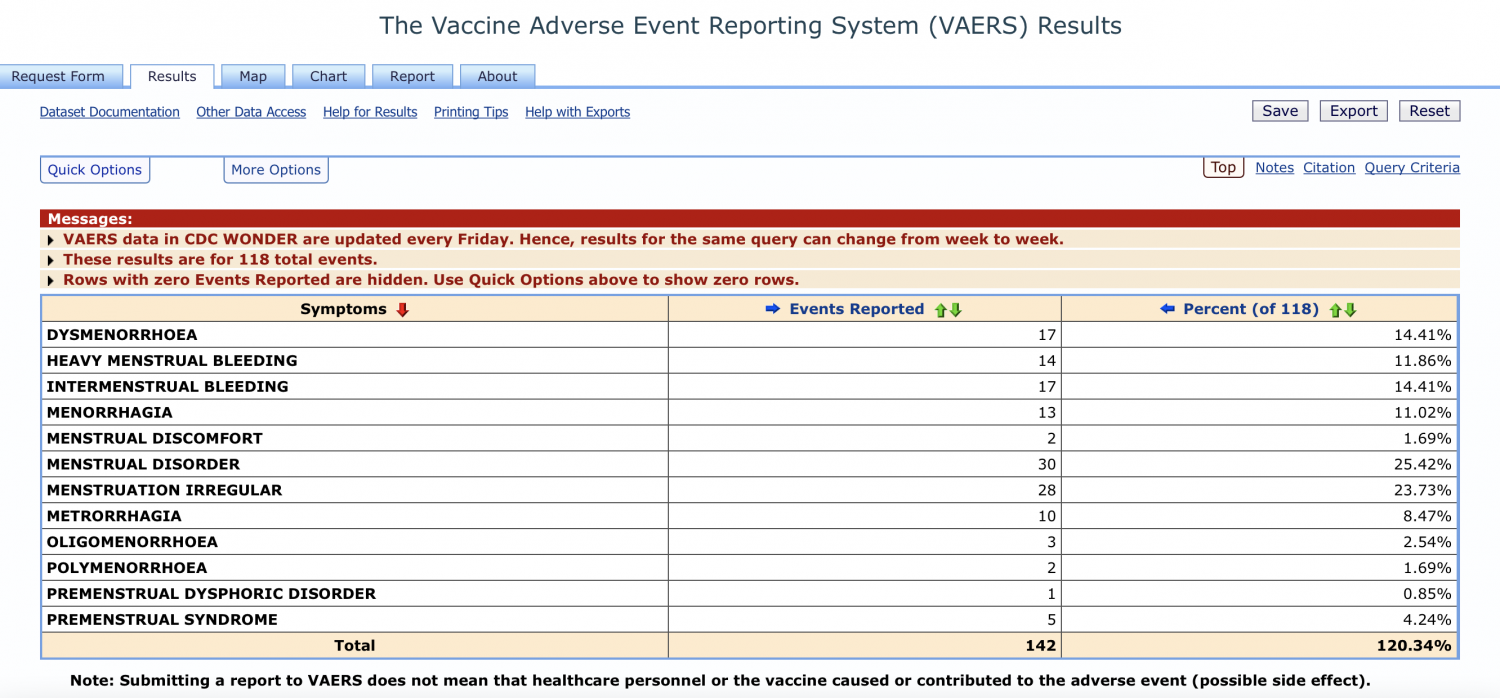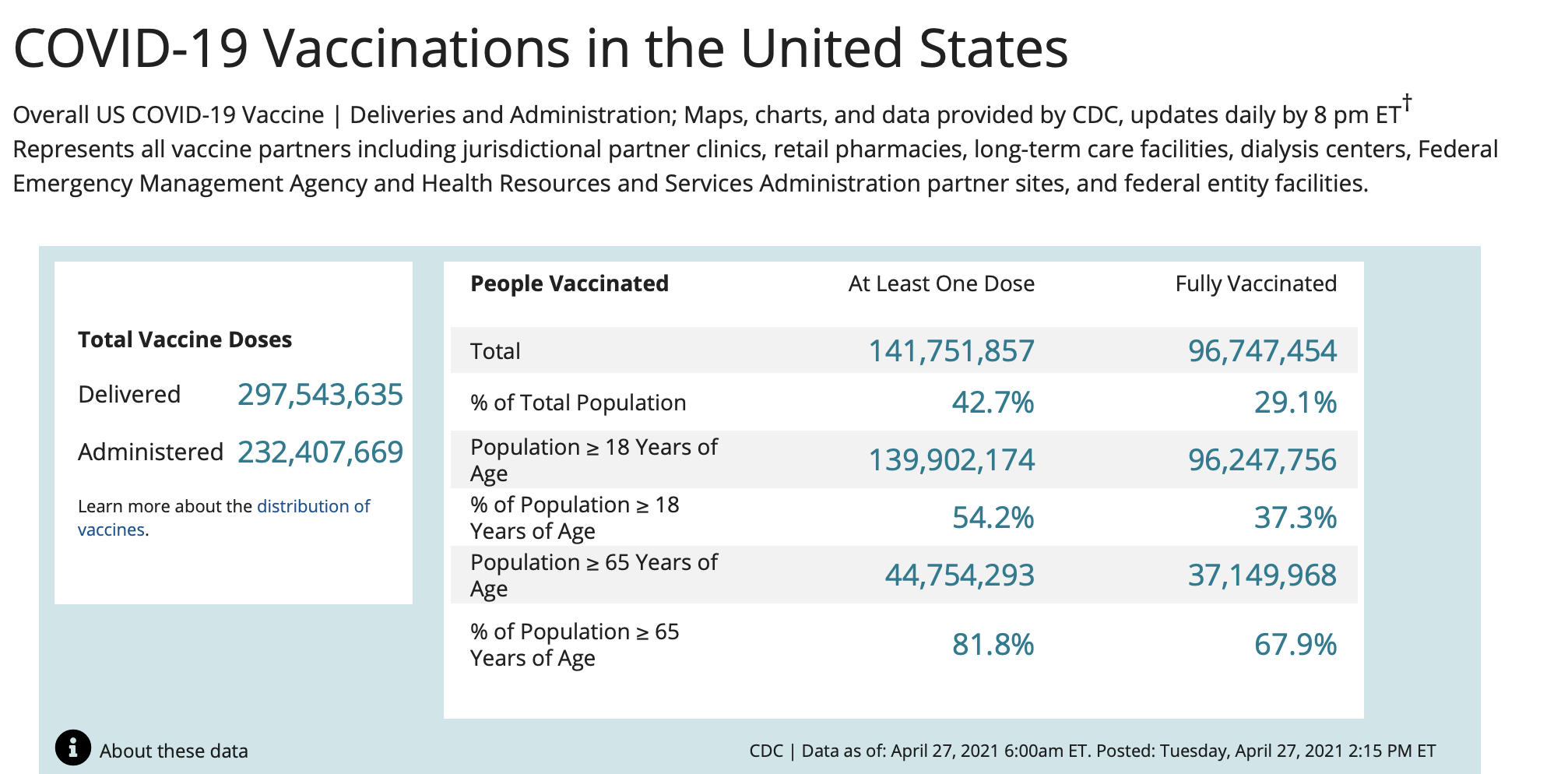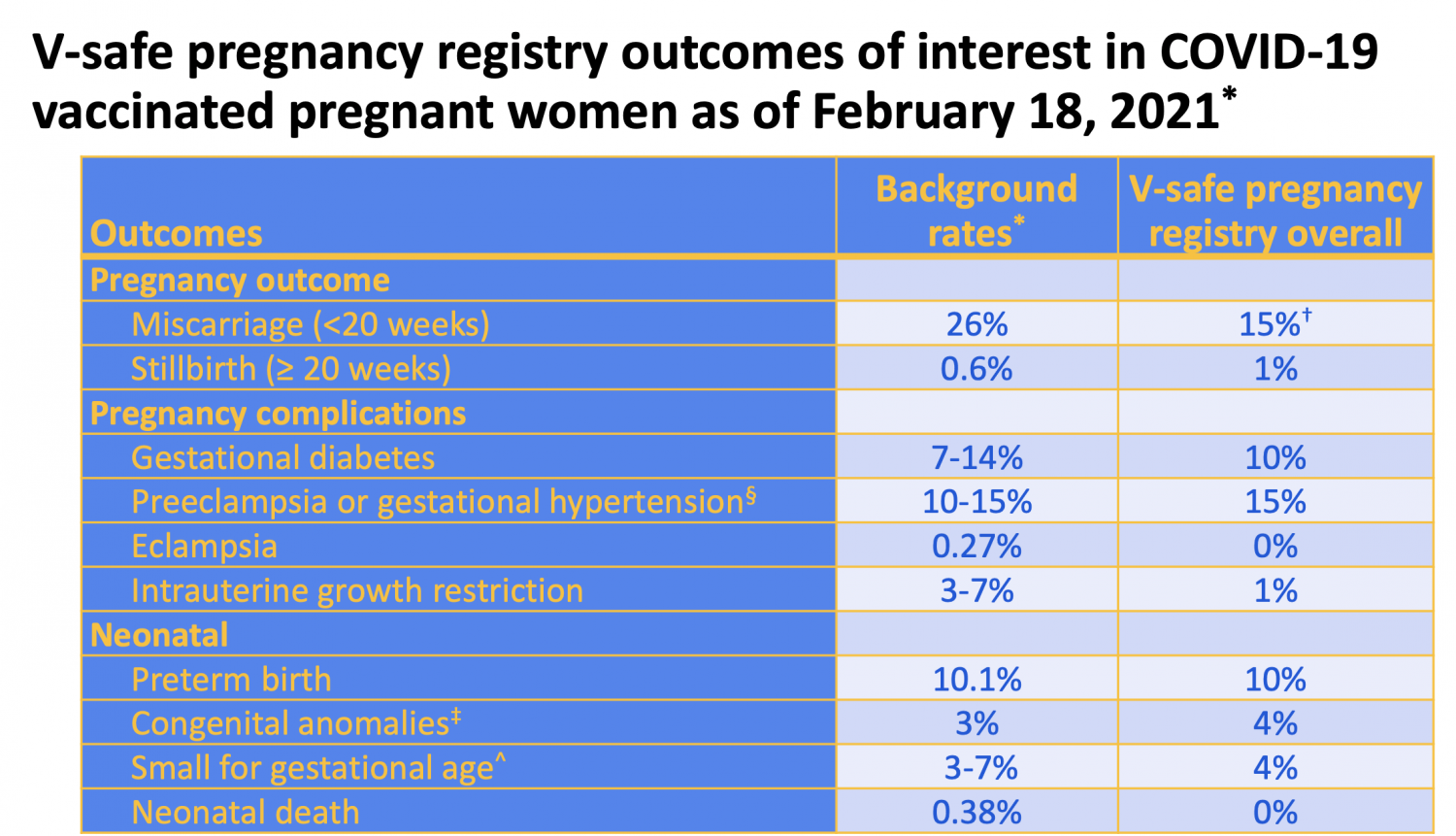
Incorrect: There is no biological mechanism to support allegations that vaccinated people cause illnesses in unvaccinated people. And RNA vaccines cannot cause viral shedding in vaccinated people, since they don’t contain the virus.

FULL CLAIM: COVID-19 vaccines cause menstrual problems in women; vaccinated people are causing health problems in unvaccinated people around them because they shed live virus and/or spike protein
REVIEW
In April 2021, multiple social media posts and articles claimed that COVID-19 vaccines cause menstrual problems in vaccinated women (see examples here, here, here, and here). Others even claimed that vaccinated women were causing unvaccinated people around them to develop health problems, and called for vaccinated people to be “kept away” from others (see screenshot of Facebook post). Several of these posts went viral on multiple social media platforms.
Discussions about the potential effect of COVID-19 vaccination on menstruation appeared to have increased following a tweet by Kathryn Clancy, a professor of anthropology at the University of Illinois who studies women’s health and the menstrual cycle. Published on 24 February 2021, Clancy expressed curiosity over whether women vaccinated against COVID-19 recently experienced very heavy periods as she and others did. Her tweet received over 560 replies and 800 retweets.
A colleague told me she has heard from others that their periods were heavy post-vax. I'm curious whether other menstruators have noticed changes too? I'm a week and a half out from dose 1 of Moderna, got my period maybe a day or so early, and am gushing like I'm in my 20s again.
— Dr. Kate Clancy 🏳️🌈 (@KateClancy) February 24, 2021
Clancy began a survey to study the frequency of menstrual changes that occurred following COVID-19 vaccination. While some people used her survey to suggest that the vaccine was responsible for menstrual irregularities and a reason not to take it (see an archive of a now-deleted tweet making this suggestion), Clancy’s response made it clear that she encouraged women to get vaccinated.
Not enough evidence to support claims that menstrual irregularities occurring after COVID-19 vaccination are due to the vaccines
There is little to no information available regarding changes in women’s menstrual cycles after COVID-19 vaccination. In a blog post, gynecologist Jen Gunter found that clinical trials for the authorized COVID-19 vaccines didn’t have any public data on this subject. She also noted that vaccine clinical trials generally don’t study this subject.
Therefore, at the moment, there isn’t sufficient evidence to draw a causal association between menstrual changes and COVID-19 vaccines. This Facebook post alleged that “there have been tens of thousands of reports” and therefore “there is likely a causal relationship”.
The basis of the post’s claim that “there have been tens of thousands of reports” is unclear. A search of the U.S. Vaccine Adverse Events Reporting System (VAERS), which records adverse events occurring after vaccination, showed a total of 142 reports of menstrual problems for COVID-19 vaccines as of 28 April 2021, not tens of thousands as claimed.

Figure 1. VAERS data on events related to menstruation after COVID-19 vaccination, extracted on 28 April 2021.
However, a caveat is that VAERS relies on voluntary reporting, hence the records are likely incomplete and don’t reflect all events following vaccination.
Furthermore, although anecdotal reports of menstrual irregularities surfaced on social media platforms, it is important to remember that millions of women received COVID-19 vaccines who may not have discussed their menstrual cycles. According to the U.S. Centers for Disease Control and Prevention (CDC), more than 141 million people in the U.S. received at least one dose of COVID-19 vaccine as of 27 April 2021.

Figure 2. CDC data on COVID-19 vaccinations in the U.S. as of 27 April 2021.
The CDC data isn’t broken down by gender, but many state-specific dashboards do report a breakdown of vaccinations based on gender. A 12 April Kaiser Health News article reported that of 38 states that did break down vaccinations based on gender, all 38 found that women made up more than 50% of vaccine recipients so far. If we put this information together and assume that the survey results are representative of all states, then more than 70 million women received COVID-19 vaccines.
In addition, many factors unrelated to vaccines, such as changes in diet and physical activity, as well as underlying illnesses like endometriosis and uterine cancer, can also result in menstrual irregularities.
In light of these complexities, it is important to compare the prevalence of an event between unvaccinated and vaccination groups to determine whether a vaccine caused a particular event, and see if the prevalence is significantly higher in the vaccinated group.
We also need to consider that abnormal uterine bleeding and heavy menstrual bleeding (menorrhagia) were estimated to affect 14 to 25% in women of reproductive age[1], meaning that such events aren’t rare. But in the absence of systematically collected data on menstrual irregularities in vaccinated women, we aren’t able to compare prevalences in unvaccinated and vaccinated women.
At the moment, the dearth of information on this topic means that we cannot rule out menstrual changes induced by COVID-19 vaccines. Indeed, Gunter’s blog post delved into several biological mechanisms that could explain a genuine link, such as changes in chemical signals between various parts of the body that regulate the menstrual cycle, specifically the brain, uterus, and ovaries.
“These effects could be from the vaccine itself, the immune system response to the vaccine, or potentially related to fever or feeling unwell from the vaccine or stress related to vaccination,” she wrote. “There are a lot of complex immune system interactions in the lining of the uterus that are also involved in menstruation.”
But Gunter refuted claims about vaccines causing infertility, as seen in this LifeSiteNews article, stating that these aren’t supported by data. Safety monitoring via the CDC’s V-safe smartphone-based tool has also not shown signals for concern.

Figure 3. CDC data released on 1 March 2021 comparing the background rates (representative of unvaccinated people) of various pregnancy-related outcomes with rates in vaccinated women who had reported events in the V-safe health checker tool.
Until scientific studies to determine if there is a link between COVID-19 vaccination and menstrual irregularities are available, Gunter suggested that potential menstrual irregularities can be viewed as a “vaccine side effect like fever”:
“[I]t’s a sign the immune system is being activated. And in the same way that fever doesn’t make people permanently hot after a vaccine, menstrual irregularities will not be permanent either.”
Claims that vaccinated people cause health problems in unvaccinated people are unsubstantiated; shedding from RNA vaccines isn’t possible
Still others went even further, claiming—mainly on the basis of anecdotal reports on social media—that vaccinated people are causing health problems in unvaccinated people around them, as seen in these posts by James Lyons-Weiler, Christiane Northrup, and Larry Palevsky. All three individuals previously published vaccine misinformation (see here, here, and here). Instagram influencer Chloe Angeline, who goes by the handle of “selfhealingmama” and has more than 13,000 followers, also made the same claim in a now-deleted Instagram video, archived here.
There simply isn’t a biological mechanism that would explain the phenomenon of a vaccine affecting other people “by proxy”, as Gunter explained in another blog post:
“Neither of the Pfizer or Moderna vaccines, which use mRNA (messenger RNA), nor the Johnson and Johnson vaccine (which uses a viral vector) can possibly affect a person who has not been vaccinated, and this includes their menstruation, fertility, and pregnancy.”
Northrup claimed that vaccinated women were influencing the menstrual cycles of unvaccinated women. This claim appears to be based on the popular idea of period syncing (also known as menstrual synchrony), although there isn’t evidence supporting the existence of period syncing.
Both Northrup and Palevsky claimed that “shedding” from vaccinated individuals was responsible for health problems in unvaccinated people. In this article, David Gorski, professor of surgery at Wayne State University and editor of Science-Based Medicine, explained why the claim is false.
As Gorski described, the shedding of a vaccine virus can only happen with live virus vaccines, such as the oral polio vaccine and rotavirus vaccine. But there’s a critical difference between viruses used in vaccines and the viruses that cause disease:
“There’s a difference between shedding and causing disease, however. For one thing, the strains of virus used in live attenuated virus vaccines are just that—attenuated. They’ve been weakened so that they don’t cause actual disease. Otherwise, using a live virus vaccine would be the same as giving the disease to the person vaccinated, which would rather sabotage the whole purpose of vaccination in the first place.”
In Palevsky’s case, he specifically implicated the RNA vaccines in “shedding”. Since RNA vaccines don’t contain the virus itself, and therefore cannot cause someone to shed the virus, Palevsky instead claimed that vaccinated individuals were shedding the spike protein, and this was the cause of illness in unvaccinated people. He also suggested that spike protein produced by vaccinated people is the cause of illness in unvaccinated people, because COVID-19 patients also have high amounts of spike protein in their bodies.
The claim is unsupported by evidence. As Gorski pointed out, while the RNA in COVID-19 vaccines provide cells with instructions for how to make the spike protein of SARS-CoV-2, the RNA degrades fairly quickly and therefore wouldn’t cause cells to persistently churn out spike protein. Nor would the amount of spike protein produced be high enough to be excreted by the person.
Palevsky’s claim also implies that spike protein alone is sufficient to cause illness, but this isn’t supported by evidence either. Gorski explained that COVID-19 patients are ill due to the replication of the SARS-CoV-2 virus in their bodies:
“The reason SARS-CoV-2 is infectious is because droplets containing the virus suspended in the air get inhaled and manage to take up shop in the respiratory tree, replicating and making a lot more virus. A protein alone can’t do that […] it’s the virus, its replication in cells leading to massive cell death, and the immune response provoked by the virus in the context of infection that lead to the severe illness we see.”
Conclusion
Overall, there isn’t sufficient evidence to draw a causal link between COVID-19 vaccination and the menstrual irregularities that vaccinated women experienced. Studies will be needed to shed light on whether the vaccines induce changes in women’s physiology. However, claims that the COVID-19 vaccines adversely affect fertility or pregnancy aren’t supported by safety data.
The claim that vaccinated people somehow cause unvaccinated people to become ill, which is based on unverified anecdotal reports, is scientifically baseless. No biological mechanism exists that would explain how such a phenomenon would occur.
REFERENCES
- 1 – Whitaker et al. (2016) Abnormal uterine bleeding. Best Practice & Research Clinical Obstetrics & Gynaecology.


